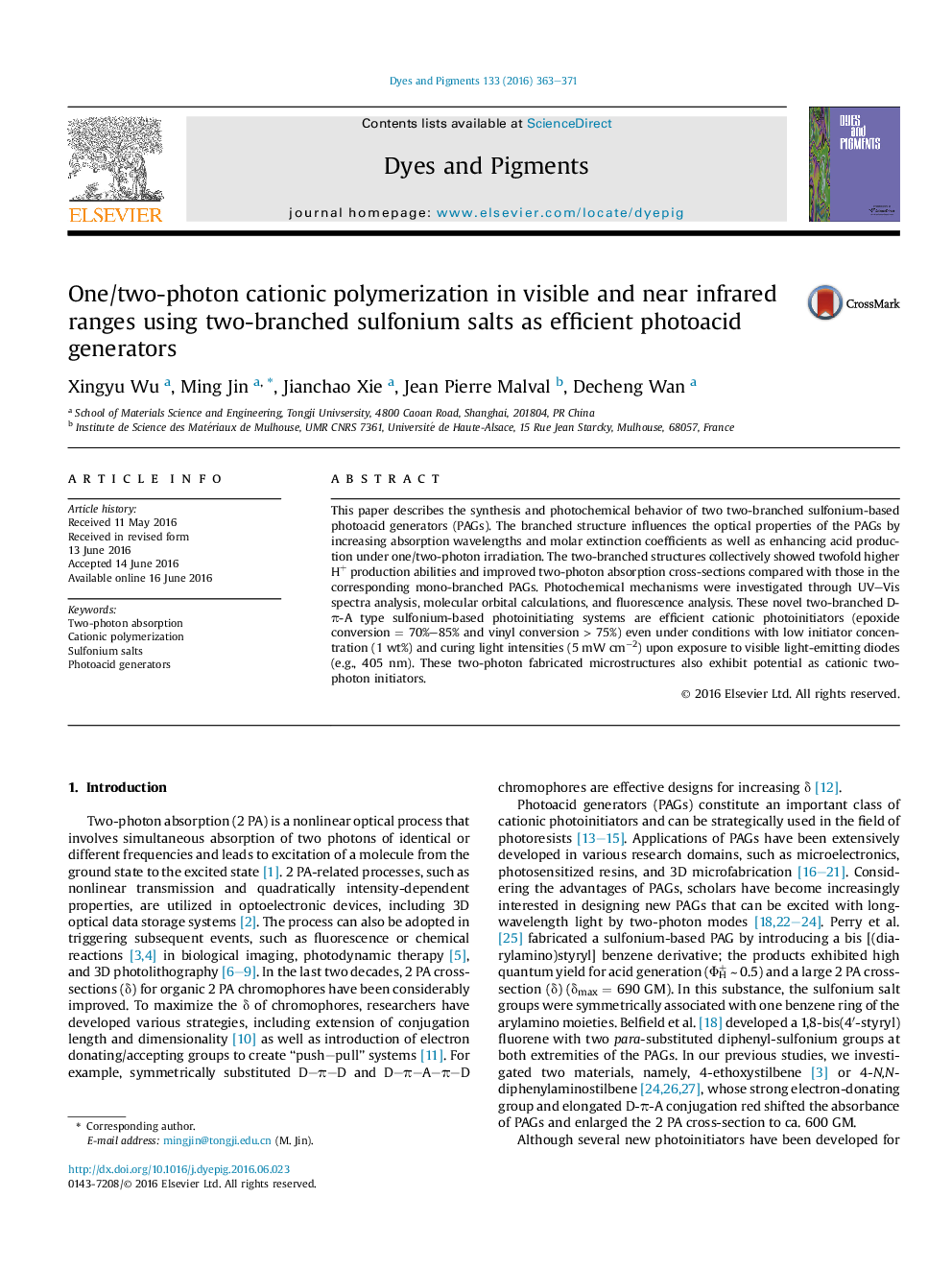| کد مقاله | کد نشریه | سال انتشار | مقاله انگلیسی | نسخه تمام متن |
|---|---|---|---|---|
| 175404 | 458909 | 2016 | 9 صفحه PDF | دانلود رایگان |
• The two branched sulfonium salts show a twofold greater H+ production than the single branched analogues.
• These photoacid generators match the emission of new light sources, i.e., UV–vis LED at 405 nm.
• The high two-photon absorption cross-sections can be applied in two-photon microfabrication with Laser.
This paper describes the synthesis and photochemical behavior of two two-branched sulfonium-based photoacid generators (PAGs). The branched structure influences the optical properties of the PAGs by increasing absorption wavelengths and molar extinction coefficients as well as enhancing acid production under one/two-photon irradiation. The two-branched structures collectively showed twofold higher H+ production abilities and improved two-photon absorption cross-sections compared with those in the corresponding mono-branched PAGs. Photochemical mechanisms were investigated through UV–Vis spectra analysis, molecular orbital calculations, and fluorescence analysis. These novel two-branched D-π-A type sulfonium-based photoinitiating systems are efficient cationic photoinitiators (epoxide conversion = 70%–85% and vinyl conversion > 75%) even under conditions with low initiator concentration (1 wt%) and curing light intensities (5 mW cm−2) upon exposure to visible light-emitting diodes (e.g., 405 nm). These two-photon fabricated microstructures also exhibit potential as cationic two-photon initiators.
Two branched sulfonium salts photoacid generators can initiate different cationic photopolymerizations under one and two-photon irradiation conditions (405 nm LED and 780 nm Laser).Figure optionsDownload as PowerPoint slide
Journal: Dyes and Pigments - Volume 133, October 2016, Pages 363–371
